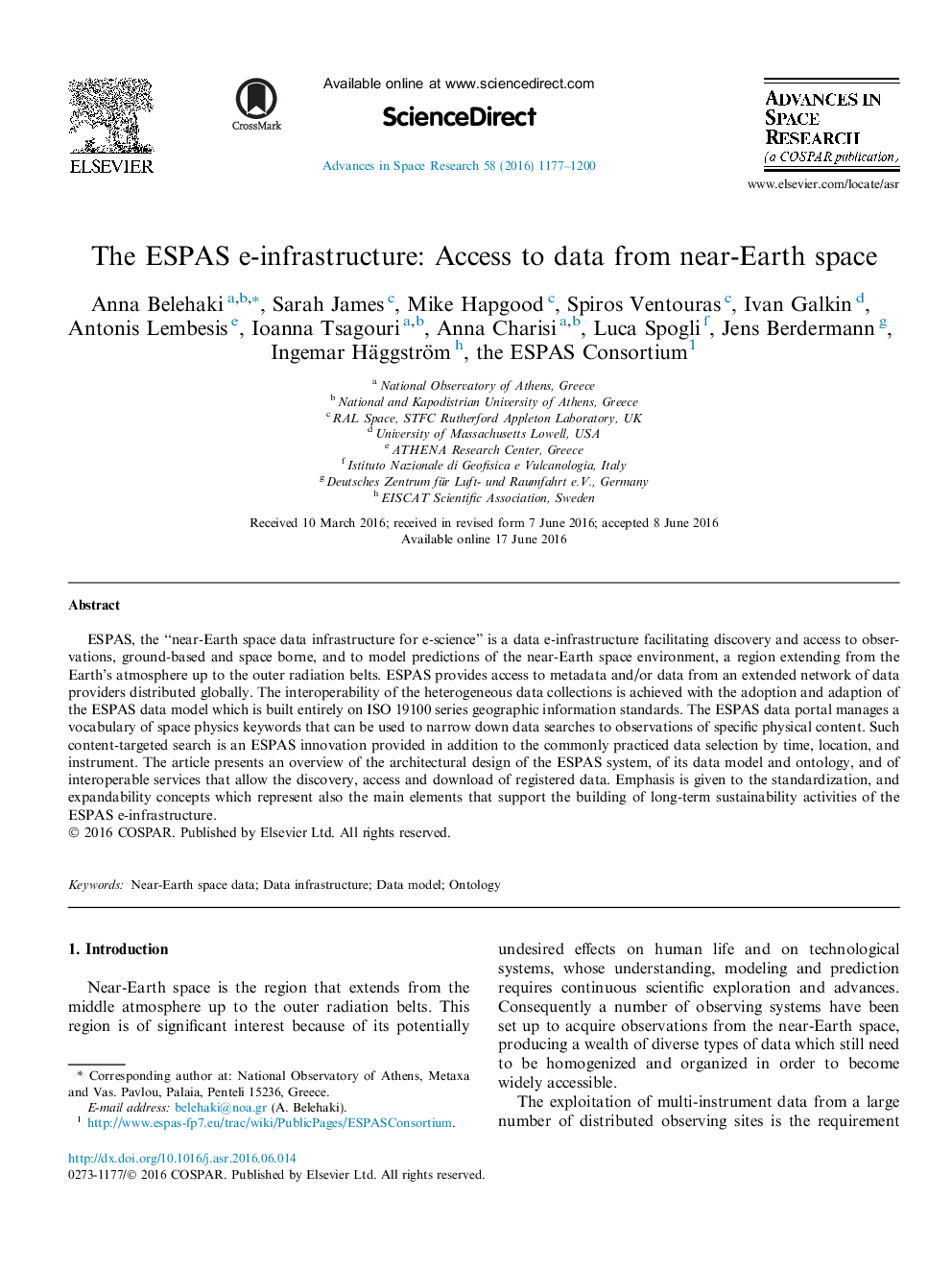| Article ID | Journal | Published Year | Pages | File Type |
|---|---|---|---|---|
| 1763175 | Advances in Space Research | 2016 | 24 Pages |
ESPAS, the “near-Earth space data infrastructure for e-science” is a data e-infrastructure facilitating discovery and access to observations, ground-based and space borne, and to model predictions of the near-Earth space environment, a region extending from the Earth’s atmosphere up to the outer radiation belts. ESPAS provides access to metadata and/or data from an extended network of data providers distributed globally. The interoperability of the heterogeneous data collections is achieved with the adoption and adaption of the ESPAS data model which is built entirely on ISO 19100 series geographic information standards. The ESPAS data portal manages a vocabulary of space physics keywords that can be used to narrow down data searches to observations of specific physical content. Such content-targeted search is an ESPAS innovation provided in addition to the commonly practiced data selection by time, location, and instrument. The article presents an overview of the architectural design of the ESPAS system, of its data model and ontology, and of interoperable services that allow the discovery, access and download of registered data. Emphasis is given to the standardization, and expandability concepts which represent also the main elements that support the building of long-term sustainability activities of the ESPAS e-infrastructure.
